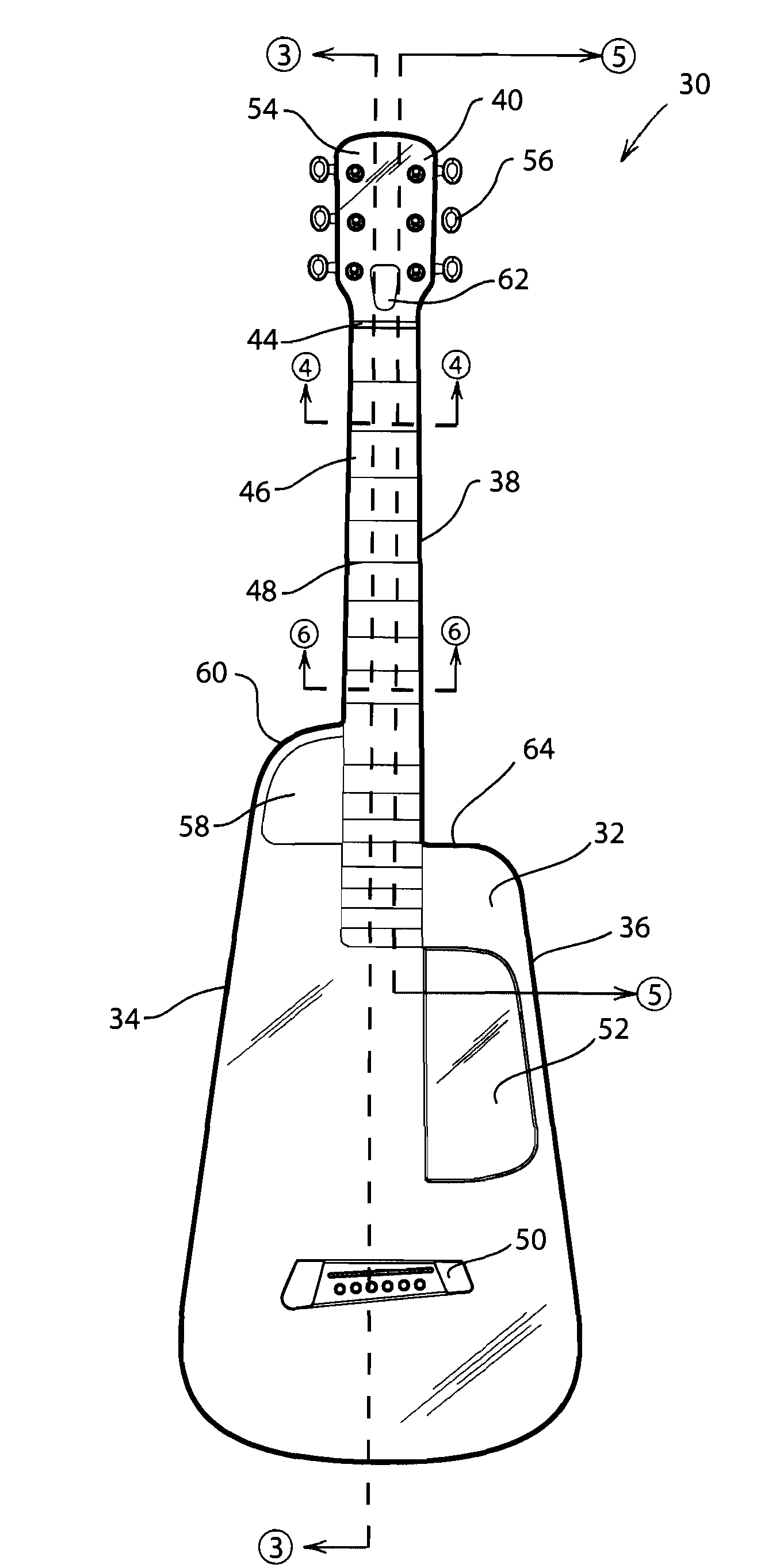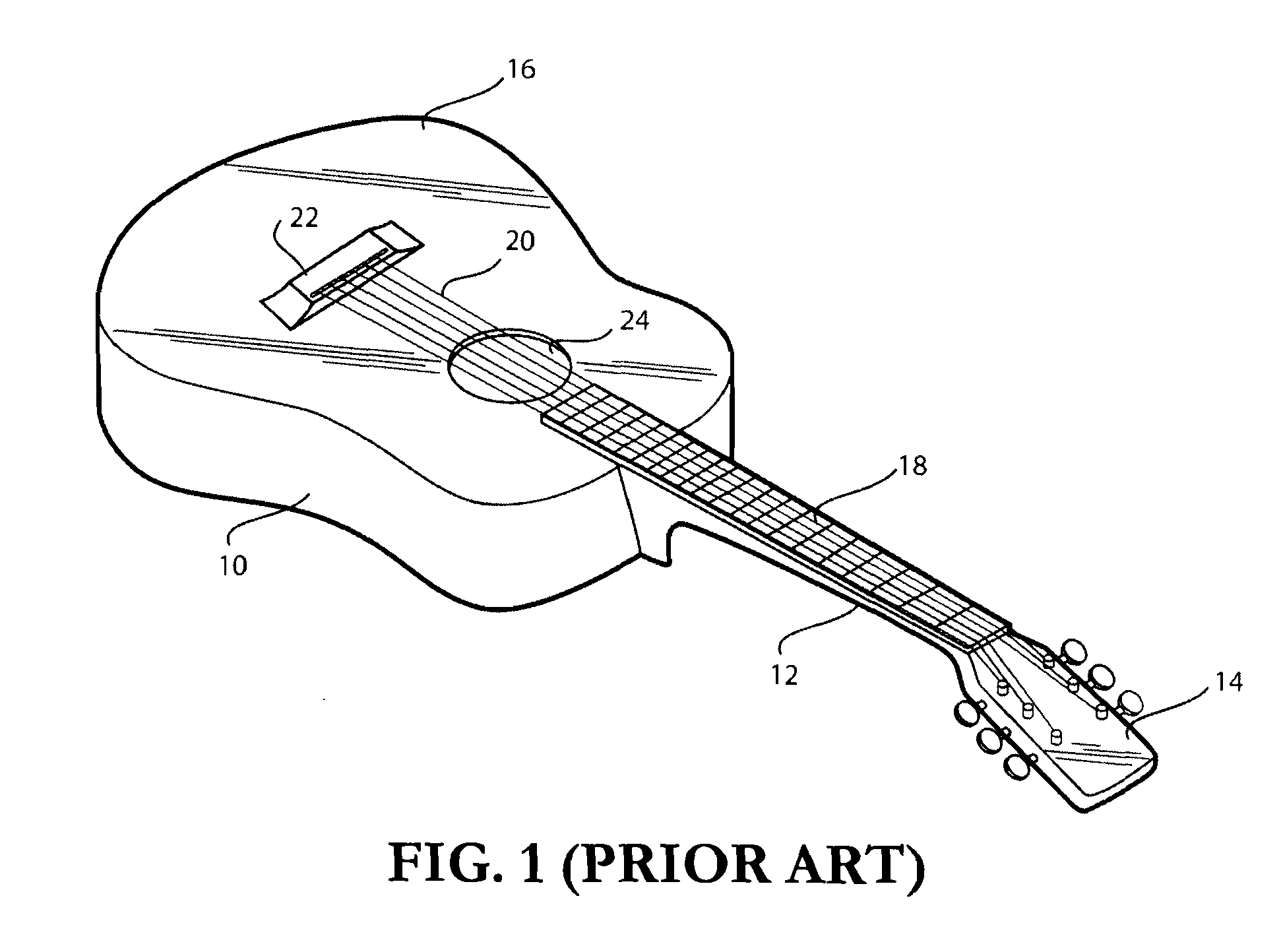Stringed musical instruments, and methods of making the same
a musical instrument and string technology, applied in the field of stringed musical instruments, can solve the problems of reducing the “sustainability” of the instrument, reducing the sound quality of the instrument, and the most expensive and resonant guitars are typically very ligh
- Summary
- Abstract
- Description
- Claims
- Application Information
AI Technical Summary
Benefits of technology
Problems solved by technology
Method used
Image
Examples
Embodiment Construction
[0032]An first exemplary embodiment of a stringed instrument in accordance with this invention is illustrated in FIGS. 2 and 3. Exemplary stringed instrument 30 includes a soundboard 32 and a unitary shell 34 that includes a body 36, a neck 38 and a head 40. As described in more detail below, unitary shell 34 may be formed by composite manufacturing processes, plastics manufacturing processes, or other similar processes, or combinations of such processes. Unitary shell 34 includes a cavity 42 extending from body 36 through neck 38 to head 40. Soundboard 32 is fixedly attached to unitary shell 34, such as by adhesives, fasteners, welds, snap-fit (e.g., as in plastic parts) or any combination thereof. Exemplary adhesives include, glue, epoxy, or other similar adhesives. Exemplary fasteners include nails, rivets, staples, or other similar fasteners.
[0033]Soundboard 32 extends from body 36, along neck 38 to a nut 44 mounted to head 40. A fingerboard 46, which includes upraised frets 48,...
PUM
 Login to View More
Login to View More Abstract
Description
Claims
Application Information
 Login to View More
Login to View More - R&D
- Intellectual Property
- Life Sciences
- Materials
- Tech Scout
- Unparalleled Data Quality
- Higher Quality Content
- 60% Fewer Hallucinations
Browse by: Latest US Patents, China's latest patents, Technical Efficacy Thesaurus, Application Domain, Technology Topic, Popular Technical Reports.
© 2025 PatSnap. All rights reserved.Legal|Privacy policy|Modern Slavery Act Transparency Statement|Sitemap|About US| Contact US: help@patsnap.com



